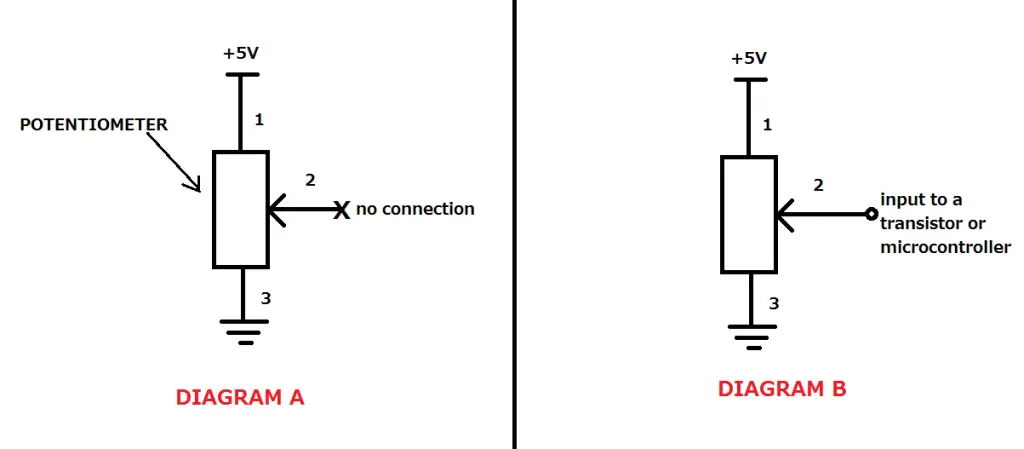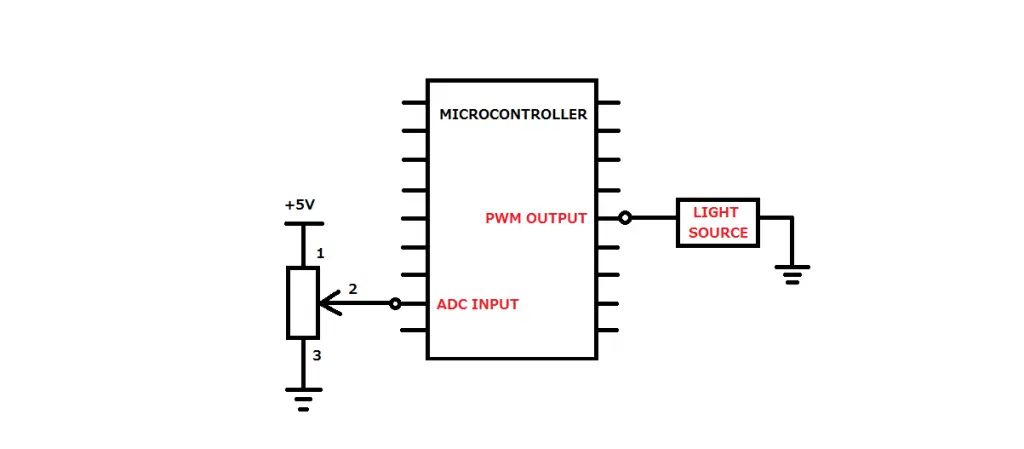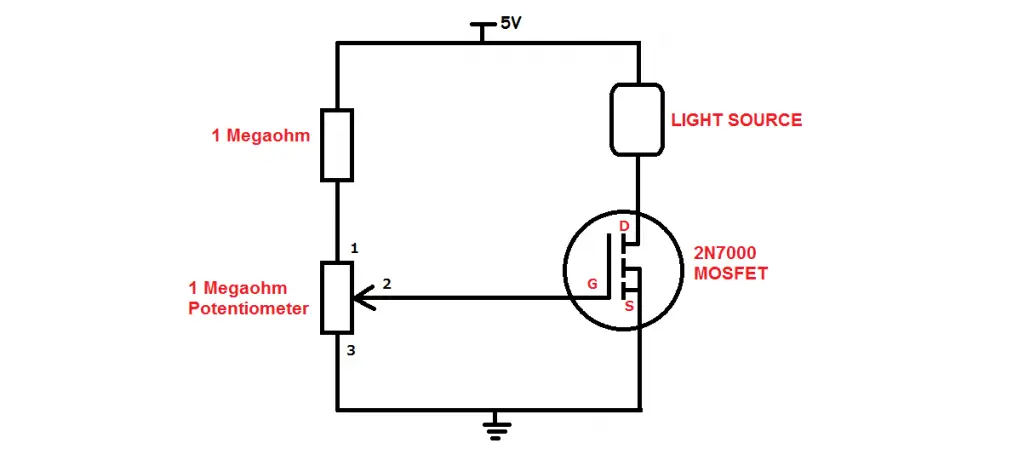You might be familiar with resistors and their ability to reduce current as well as voltage.
But, normal resistors have a fixed resistance which cannot be varied.
Potentiometers are three terminal devices which have the ability to vary their resistance.
This is why a potentiometer can sometimes be referred to as a Variable Resistor.
Other than just varying resistance, the potentiometer can also vary voltage.
Light Dimmers are circuits which are connected to lighting fixtures that give you the ability to adjust the brightness of the light from 0% to 100% by altering the power that is delivered to the lights.
But, can you use a potentiometer as a light dimmer? Yes, a potentiometer can be used as a light dimmer. There are many different circuit configurations that a potentiometer can function as a light dimmer. These circuit configurations can include a microcontroller or be used without one.
However, a note to be made is that a potentiometer by itself might not be able to replace existing light dimmer circuits already installed. It will need to replace the existing potentiometer in the light dimmer circuit.
I shall cover these circuits in more detail in the rest of the article.
Different configurations of potentiometers as a light dimmer
While a potentiometer can be used as a light dimmer, there are different applications and circuit configurations available.
I will break them down into AC and DC applications.
Potentiometer used as a light dimmer: AC application
Whether you are trying to create the right ambience, or you are sensitive to brighter lights, light dimmers have many advantages and are a great addition to a living or work space.
Light dimmers that are installed in your home or in your workplace are designed to deal with Alternating Current (AC).
Alternating current differs to Direct Current (DC) as it’s magnitude ‘alternates’ (changes) with time.
AC applications deal with higher voltages which range from 120V – 240V.
Due to this, the components and circuits used in AC applications need to be able to handle these higher currents and voltages.
Light dimmer circuits are designed specifically to handle high power.
Also, the potentiometer is only one part of this light dimmer circuit.
There are many other components that are used which contribute to the overall workings of the light dimmer.
So, when answering the question whether a potentiometer can be used as a light dimmer, it can but not by itself.
You will need to use it in a circuit specifically designed to dim lights in AC applications.
However, since there are high voltages and currents involved, it is not advisable to do so yourself.
Hire an electrician who is trained to deal with AC circuitry and can replace the potentiometer for you.
Note, these types of light dimmers only work incandescent lamps and not fluorescent lights.
Potentiometer used as a light dimmer: With a Microcontroller
The next area where a potentiometer can be used as a light dimmer is Direct Current (DC) applications.
DC applications deal with much lower voltages and currents compared to its AC counterpart.
Also the magnitude of the voltage is constant and does not vary with time.
Microcontrollers are essentially small computers embedded on a single chip.
A microcontroller has a myriad of capabilities which include storing memory, pulse width modulation, serial communication, analog to digital conversion, timers, and much more.
The Analog to Digital Converter (ADC) and Pulse Width Modulation (PWM) are the two main functions we are concerned with for the light dimmer.
Analog to Digital Converter (ADC)
Microcontrollers are devices that deal with digital data.
Everything in the circuit outside of the microcontroller is analog (this means values vary in increments continuously from its minimum to maximum value).
For example voltages between 0 and 5V can vary in increments of 0.1 volts thereby giving you values such as 0.1, 0.2, 0.3 etc.
This analog data needs to be converted to a digital value in order for the microcontroller to interpret it.
It does this by using the ADC.
A voltage from a sensor, potentiometer can be fed into one of the designated ADC inputs which can then be converted to a digital value.
Pulse width Modulation (PWM)
Pulse width modulation is a technique used to vary the power that is delivered to an output of a microcontroller.
Normally the output of a microcontroller can either be high (+5V), or low (0V).
But, by varying the time that the pin is high vs low, we can vary the power at the output.
This time that the pin is ‘on’ for a certain time period is known as the duty cycle.
For example, if the pin is high for 50% of the time, the power output will be 50% of the maximum voltage (5V) thereby giving us a voltage of 2.5V (0.5 x 5).
The output could be a speaker, motor, light etc.
The microcontroller has designated PWM output pins which outputs can be connected to.
This is perfect for light dimmers as the power can be varied to the light thereby adjusting its brightness.
Micrcontroller and Potentiometer light dimmer circuit
So how do we get a light dimmer using a potentiometer and microcontroller?
Below are the two configurations of a three terminal potentiometer.

Diagram A is used to vary resistance. The middle terminal (pin 2) is not connected in this setup.
Diagram B is used to vary voltage. The middle terminal can be connected to the input of a transistor or microcontroller.
When building the light dimmer using the potentiometer and microcontroller, we are going to need to set up the pot as seen in Diagram B (vary voltage).
Below is the final circuit setup which has a potentiometer, microcontroller and Light Emitting Diode.

Here’s how the circuit functions;
- Turning the potentiometer’s knob is going to vary the voltage (between 0V and 5V) at its middle terminal.
- This voltage is connected to the micrcontroller’s ADC input
- The ADC then converts this voltage to a digital value
- This value is used to set the duty cycle of pulse width modulation
- Since the LED (or any other light source) is connected to one of the microcontroller’s PWM output pins, its brightness gets varied depending on how much you rotate the potentiometer
- Voila! You have a light dimmer
Potentiometer used as a light dimmer: No Microcontroller
You might not have experience with microcontrollers or programming but still want to build a light dimmer using a potentiometer.
Is it possible? Yes! You can still build a light dimmer using a potentiometer and not have to use a microcontroller.
The components you will need to build this light dimmer are;
- 2N700 N-channel MOSFET
- 1Megaohm resistor
- 1Megaohm potentiometer
- Light as the output (LED, lamp etc)
Below is the circuit for the light dimmer using the above components

Along with the potentiometer, the MOSFET is the other main component in this circuit.
As a voltage is applied to the Gate (G) of the MOSFET, current is allowed to flow through the Drain (D) and Source (S) of the MOSFET (which means current can flow through the light source thus powering it).
The amount of current that flows depends on how much voltage is present at the Gate of the MOSFET,
The more voltage the more current flows and vice versa and this is how the brightness of the light source is varied.
The amount of voltage present at the gate is determined by the potentiometer.
When the potentiometer is at this maximum resistance (1 Megaohms) the voltage at the gate is at its maximum thereby allowing the maximum current to flow which causes the light to glow at its brightest.
On the flipside, when the potentiometer offers no resistance (0 ohms), the voltage at the gate is 0 (which means that no current flows) and the light is turned off.
Varying the potentiometer between values from 0 ohm to 1 Megaohm will give you a range of brightnesses.
Different types of potentiometer that can be used for light dimmers
If you are designing a light dimmer that uses a potentiometer, you have different options available of how you physically vary its resistance.
However, while they are physically designed differently, they still all function the same.
The different Potentiometers available are;
- Rotary
- Multi turn
- Trimmer
- Digital
- Preset
- Linear
- Slide
For a light dimmer I would recommend using the rotary style potentiometer as this will give you more control when adjusting the brightness of a light.
Do potentiometers only work with LED light bulbs
LED light bulbs are becoming more popular and are replacing older incandescent bulbs.
They are more efficient and cost less as well.
But, as you saw earlier, older light dimmer circuits that use potentiometers were used to dim conventional light bulbs.
So, if you are still using incandescent light bulbs you will still be able to dim them. The light dimming circuit however will be different compared to the ones used with LED light bulbs.





